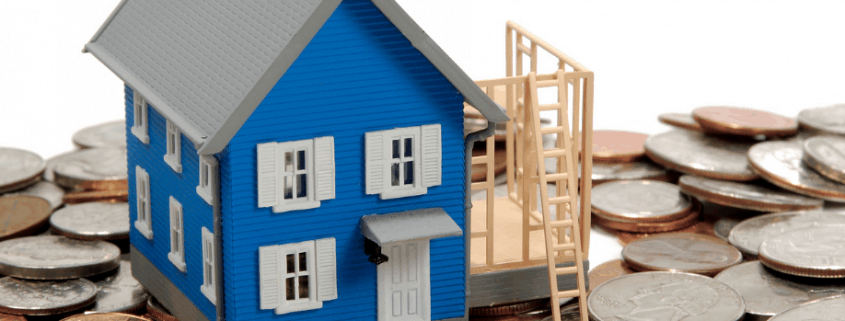6 Types of home improvement loans: Which is best for you?
Renovations to a home may be very expensive. But the good news is that you don’t have to pay for it yourself. Improve your home with the help of a home improvement loans.
The cost of completing your work, no matter what it is, is likely to be high. Over $23,000 on average is spent to renovate a kitchen in the United States! The average cost of a bathroom renovation is around $21,000. For example, a 16 by 20-foot wood deck may cost upwards of $14,005.
When it comes to funding home renovations and repairs, you’re in luck. This means we’ve done the homework for you by comparing interest rates and other important variables. Here are special home improvement loans that will fit your requirement.
Types Of Home Improvement Loans
1. Cash-out Refinance
Cash-out refinancing is a common way to acquire money for home upgrades.
It works like this: You refinance into a new mortgage loan with a larger sum than what you owe now. The leftover amount is used to pay down your existing mortgage. Your home equity is used to fund a cash-out refinancing. However, there are no laws that require cash-out money to be utilized for house improvement.
If you can refinance your loan at a lower interest rate than your existing mortgage, a cash-out refinance is usually the best option.
A shorter loan period may also be an option.
2. Rehab Loan
You may also combine your mortgage and home renovation expenditures into one loan with a rehab credit line.
A 203000 loan, on the other hand, eliminates the need to apply for two different loans or pay two closing expenses. Purchase and renovations are financed together.
Rehab loans insured by the Federal Housing Administration (FHA) are ideal if you’re buying a fixer-upper and will soon need to finance home repair tasks.
There is no down payment required, and you may apply with less-than-perfect credit.
3. Home Equity Loan
If you own a house and have built-up equity, you can borrow against that value. Your equity is estimated by determining the worth of your property and deducting the outstanding mortgage loan sum.
A home equity loan, unlike a cash-out refinance, does not pay off your existing mortgage.
A home equity loan would be paid alongside your existing mortgage if you currently have one.
Home equity loans are secured by your home. Because the loan is secured against the property, lenders may provide lower interest rates, comparable to a mortgage.
If you need to borrow a significant quantity of money, a home equity loan is a smart alternative because of the low, set interest rate. Closing fees on this loan are likely to be incurred by you as well. If you’re borrowing a large sum, the additional expense must be justified.
4. Home Equity Line Of Credit (HELOC)
A “HELOC” is another option for financing home upgrades. A HELOC operates more like a credit card.
Up to a pre-approved maximum, you can borrow, pay it back, then borrow again.
A second distinction between home equity loans and HELOCs is that the interest rates on HELOCs are adjustable – they can climb and fall throughout the loan period.
Your outstanding HELOC balance — or the amount you borrowed — is subject to interest.
You may be utilizing only a fraction of your credit line at any one moment, which would result in cheaper payments and interest costs.
There are a few situations where a HELOC may be a better alternative than a home equity loan.
5. Personal Loan
As an alternative to borrowing against your home equity, you can take out a personal loan with no collateral.
Home is not used as security for an unsecured personal loan. They may be obtained considerably faster than HELOCs or home equity lines of credit due to this.
However, a personal loan often has a higher interest rate than either a home equity loan or HELOC.
6. Credit Cards
Plastic might also be used to finance some or all of your remodeling expenditures. For any home renovation project, this is the quickest and easiest way to get funding. Finally, you won’t even require a loan application from your bank.
A large credit limit is necessary, though, because home upgrades may cost tens of thousands of dollars. Two or more credit cards may be required.
And most credit cards charge you some of the highest interest rates you’ll ever find anywhere!
These are the details of home improvement loans. For more information feel free to contact us https://jamconceptremodel.com/



Leave a Reply
Want to join the discussion?Feel free to contribute!